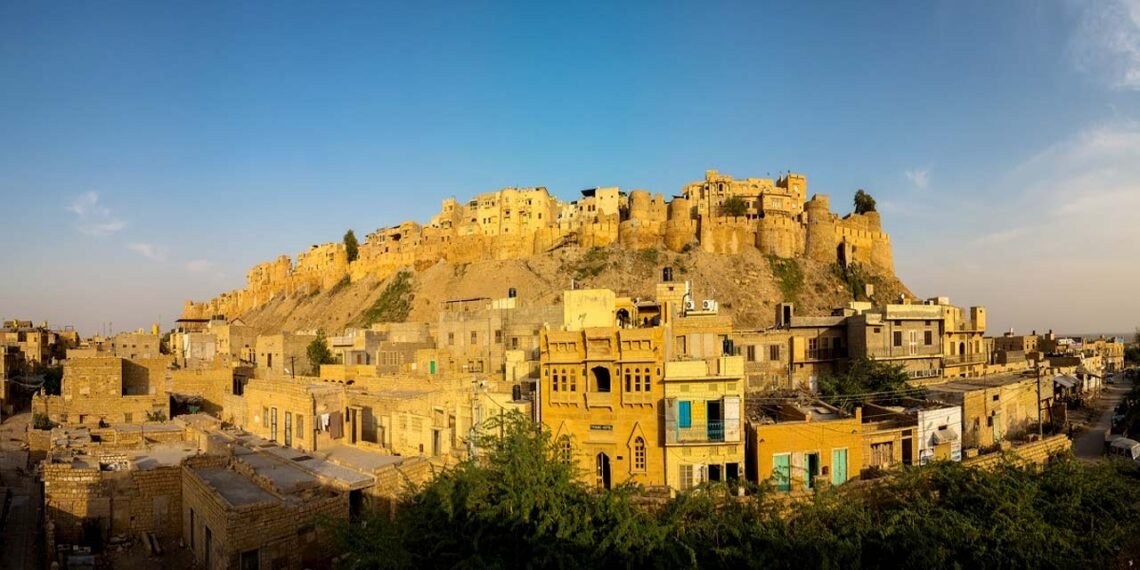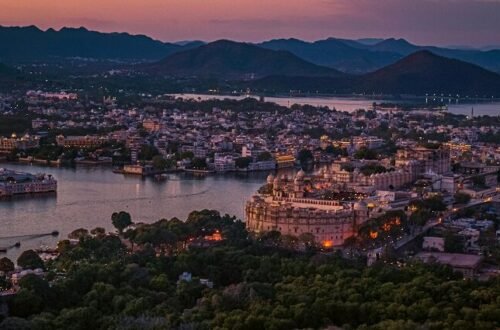Rising like a golden mirage from the sands of the Thar Desert, Jaisalmer Fort stands as one of the most stunning architectural marvels in India. Unlike most historic forts, it is not just a monument—it is a living fort, home to thousands of people who still reside, shop, and worship within its walls. This unique blend of history, culture, and daily life makes it a must-visit for any traveler to Rajasthan.
If you’re planning a visit to this timeless structure, booking a reliable taxi service in Jaisalmer can help you explore the fort and nearby attractions with ease. This guide offers everything you need to know—from its history and architecture to tips for getting there using services like one way taxi in Jaisalmer.
A Brief History of Jaisalmer Fort
Built in 1156 AD by Rao Jaisal, the founder of Jaisalmer, the fort is also known as Sonar Qila or Golden Fort due to the yellow sandstone that gives it a glowing golden hue under the sun. Positioned strategically on Trikuta Hill, the fort served both as a defensive stronghold and a hub for trade caravans traveling the Silk Route.
Over the centuries, Jaisalmer Fort has witnessed numerous battles, alliances, and shifts in power, yet it has stood strong and majestic—testament to the city’s royal heritage and architectural brilliance.
Architectural Grandeur
Jaisalmer Fort is one of the largest forts in the world, spanning 1,500 feet long and 750 feet wide, with 99 bastions adding to its regal presence. It’s not just the size but the craftsmanship that captures visitors’ hearts.
Key Features:
- Four Grand Gateways: Named Ganesh Pol, Akhai Pol, Suraj Pol, and Hawa Pol, these gates are intricately carved and historically significant.
- Raj Mahal (Royal Palace): The seven-storied royal residence offers panoramic views of Jaisalmer and a glimpse into royal life.
- Jain Temples: Built between the 12th and 16th centuries, these temples are known for their elaborate carvings and spiritual ambience.
- Merchant Havelis: Stunning mansions like Patwon Ki Haveli, Nathmal Ki Haveli, and Salim Singh Ki Haveli are nearby and reflect the wealth of Jaisalmer’s trading community.
A Living Heritage
Unlike most forts, Jaisalmer Fort is still inhabited. Roughly a quarter of Jaisalmer’s population resides within the fort’s walls. You’ll find homes, shops, restaurants, guesthouses, temples, and art galleries all functioning inside the fort complex.
This makes it more than just a historical monument—it’s a place where the past and present coexist, offering travelers a truly immersive cultural experience.
Best Time to Visit
The ideal time to visit Jaisalmer Fort is during the winter months, from October to March. The weather is pleasant, making it easier to walk around and explore the fort at leisure.
For a memorable experience, plan your trip during the Jaisalmer Desert Festival in February, when the fort becomes a vibrant center for music, dance, and camel parades.
How to Get There
Jaisalmer is well-connected by road, rail, and air. Once you’re in the city, reaching the fort is convenient with a trusted taxi service in Jaisalmer. Whether you’re arriving from the train station, airport, or a nearby hotel, a local cab or one way taxi in Jaisalmer ensures a hassle-free journey.
Most local taxi services also offer sightseeing packages that include the fort along with other attractions like Gadisar Lake, Bada Bagh, and Sam Sand Dunes.
What to See Inside the Fort
Here are the must-see spots once you’re inside:
- Jain Temples: With seven temples interconnected by corridors, these temples boast elaborate carvings similar to those in Mount Abu’s Dilwara temples.
- Palace Museum: Managed by the Archaeological Survey of India, this museum showcases artifacts, weapons, and royal memorabilia.
- Laxminath Temple: A beautiful Hindu temple dedicated to Lord Vishnu and Goddess Laxmi.
- Local Shops: Explore traditional textiles, antique jewelry, leather goods, and handicrafts in the bustling lanes of the fort.
- Cafés with a View: Enjoy Rajasthani food or a cup of chai with a spectacular view of the desert city below.
Tips for Visitors
- Hire a Guide: Local guides can share fascinating stories about the fort’s history, legends, and secret passageways.
- Wear Comfortable Shoes: The fort’s cobblestone pathways require sturdy footwear.
- Respect the Residents: It’s a living fort—be mindful of the people who call it home.
- Photography: Don’t miss sunrise or sunset views. The golden hues of the fort are particularly magical during these times.
- Book Transportation Early: During peak tourist season, book your one way taxi in Jaisalmer or cab in advance to avoid last-minute hassles.
Nearby Attractions
While in the area, consider visiting these nearby sites with your taxi:
- Gadisar Lake – A peaceful spot with boating and scenic views
- Bada Bagh – Historic cenotaphs of royal families
- Sam and Khuri Sand Dunes – For desert safaris, camel rides, and cultural performances
- Kuldhara Village – The abandoned village with legends of mystery and history
Final Thoughts
Jaisalmer Fort is more than just a historic site—it’s a living symbol of Rajasthan’s resilience, culture, and artistry. Walking through its sandstone streets is like stepping back in time, where every wall whispers tales of bravery, beauty, and tradition.
With a reliable taxi service in Jaisalmer or an affordable one way taxi in Jaisalmer, your journey to the Golden Fort becomes smooth, comfortable, and enriched with local insights. Whether you’re on a solo adventure, a family vacation, or a cultural tour, Jaisalmer Fort promises an unforgettable experience that stays with you long after you’ve left its golden walls behind.





